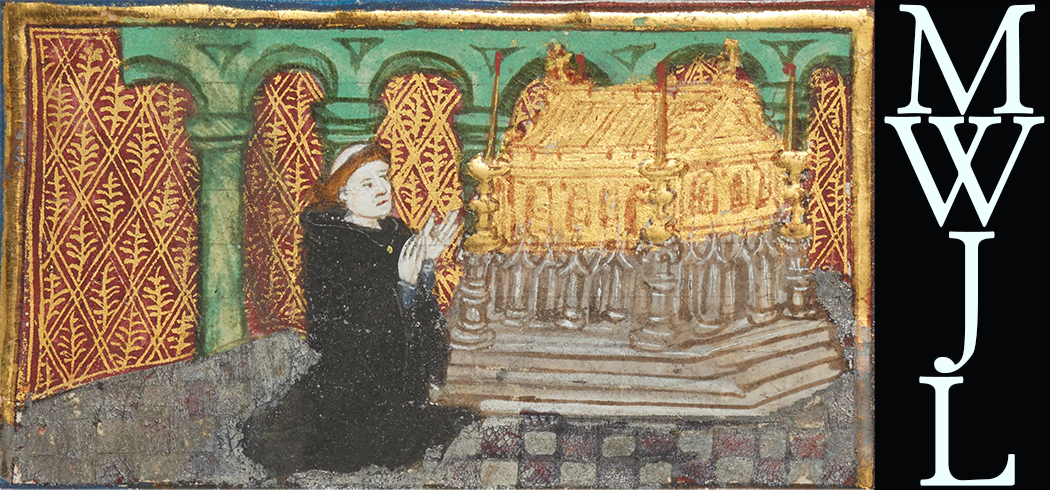 Quis Dabit Meo Capiti Fontem Lacrimarum:
Long Melford Verses
Quis Dabit Meo Capiti Fontem Lacrimarum:
Long Melford Verses
HomeAbout the ArchiveAbout John LydgateWorksManuscriptsAbout this ManuscriptEditorial ApparatusContactVisualization
Notes
-
There is the remnant of a mark above the second word here, suggesting that the first “n” is suspended. This would make the likely spelling “mannys.” The second letter of the fifth word is largely missing save for the point connecting the two minims. This feature is shared by “a” and “o,” leaving the exact spelling of the word in question. ↩
-
“This” rather than “thus” is unique to the Clopton chapel, and an interesting distinction when the location of the verse, with the high altar and mount potentially visible to the left of the penitent depending on where they stood in the room is considered. There also appears to be the remnants of a suspension mark here, making the damaged text “myn” rather than “my,” but this does not follow the text in the EETS edition. The mark is largely missing, but can be seen above the o and n at the end. ↩
-
The line is badly damaged, but the descender of the “y” in “bysshop” can be seen. As the position of the word and the length of what remains makes “kyng” unlikely, the mark to the right of the “y” is the hook of the second “s,” running into the ascender of the “h.” Since there is another suspension mark to the left of the word, the et symbol rather than “and” must be intended there. Likewise, the suspension mark at the end of the line, which moves too far to the left to be the descender of the “y” in the line above, indicates an abbreviation in the terminal word. The remainder is determined from the manuscript witnesses. ↩
-
While the line itself is very damaged, the area below the line is more intact. This allows the location of both “h’s” in “high” to be determined, as well as the lack of an “h” for “the” prior, indicating that it was the abbreviated form beginning with a thorn. Remnants of the “on” in the initial word can be seen to the right of the “p,” and common practice throughout the chapel makes the initial letter likely to be “v.” The final four words can be determined by the remnants on the panel, but the particular form of the word “altar” cannot be determined as the fourth word is too damaged and the only distinguishing mark is the lack of the descender for “h.” ↩






